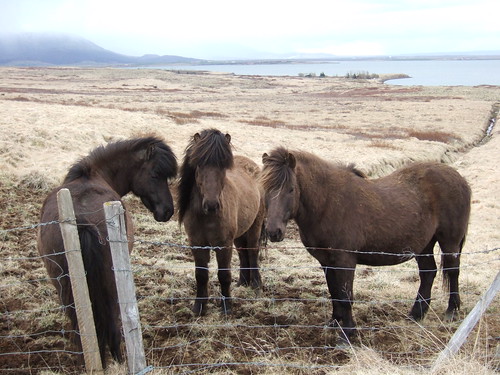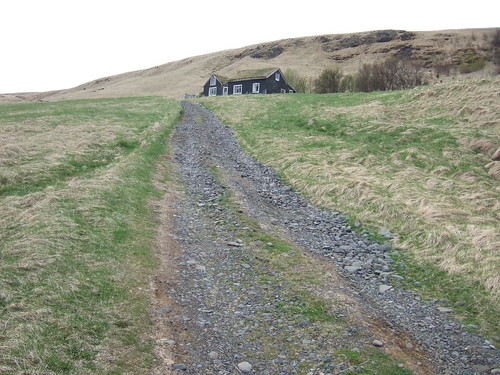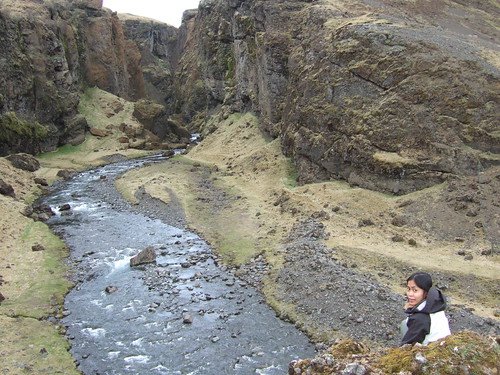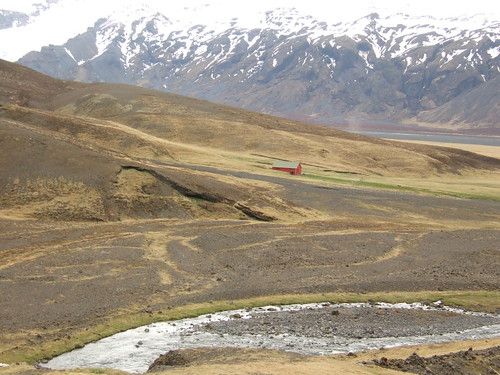
We said good-bye to Fljotsadalur to start our drive towards Vik, our next destination for the night. On the way there, we stopped by Skogafoss, a pretty waterfall right behind another hostel that was still closed for the season. It was pretty huge but it wasn’t as deafening and impressive as Gulfoss. After checking in the hostel and eating lunch, we walked to the black sand beach of Reynisdrangur. They are tall fingers of black rock jutting out from the sea. The crashing waves contribute to the pure Gothic scene–all I needed was some Bjork music in the background. If the water wasn’t cold and the wind wasn’t blowing, it would have been the perfect beach with a view.

We still had a whole day ahead of us, so we drove all the way to the border of the southeast. We ended our drive at Svinafellsjokull just enough to get a glimpse of Vatnajokull. The travelers we met had two to three weeks of holiday and they were going around the entire country. The rest of Iceland will just have to wait until we return.

Our first stop was Lanfskalavaroa, this haunting open area of rocks on top of each other. You know when you hike and come across a pile of rocks that were left by other hikers to show you the right way? This was the mother of all those piles of rocks. It’s a tradition to put a rock on top of any of the piles before you continue your way so the Dr. and I put our own rocks on top of a pile before continuing down the road.

The scenery began to change as we approached the southeast. The moss-covered lava created by eruptions from the Laki volcano that lasted for ten months and wiped off several communities around it began to look green. We entered the southeast through the town of Kirkjubaejarklaustur and stopped by Foss, a thin waterfall right on a beautiful farm. It was like entering a fairy tale: the sun was shining, the flowers were blooming and then the waterfall ahead of us was quietly trickling. Iceland is a completely different country when the sun is shining.


Down the road were the basalt columns of Dverghamrar, also known as the Cliffs of the Dwarfs. They reminded me of Giant’s Causeway in Ireland with their hexagonal shapes naturally formed overtime.
Right at the base of the Lomagnupur cliff, we found the 18th-century church of Nupsstadur in an abandoned village frozen by time. If Foss was like a fairy tale, this was like the set of an old movie. I felt like someone was going to appear out of nowhere. The church door was unlocked. We walked in and there was a small altar with a photo of the Sacred Heart.
We continued driving along Skeidararsandur, the biggest of the southern sandurs, or wasteland of black sand and glacial debris from volcanic eruptions under the the largest icecap in the country, Vatnajokull. Before the Ring Road was built, the only way here was by horseback.
Before heading back to Vik, we found out that Dyrholaey was inaccessible because of nesting season. Another two weeks and we would have seen the country’s national bird, the puffin, all over the rocks and the beach. At least we were able to see the stone arch from Hallsanef Hellir. The caves also had the basalt columns but also sharp black edges that looked brittle and thin from afar.
About an hour and a speeding ticket from the Icelandic police later, we were back in Vik, reunited with the two Germans and playing Monopoly over some wine, rum and vodka. The Dr. whipped up some pasta dish to remake the leftover chicken from the night before as we finished the last bottle of wine from my suitcase.
Related post/s:
Day 4 in Iceland: Fljotsdalur to Vik to Skaftafell photos on Flickr
Day 2 and 3: Laugarvatn to Fljotsdalur, Iceland
Day 1: Keflavik to Laugarvatn, Iceland
Video courtesy of Tripfilms.com
















